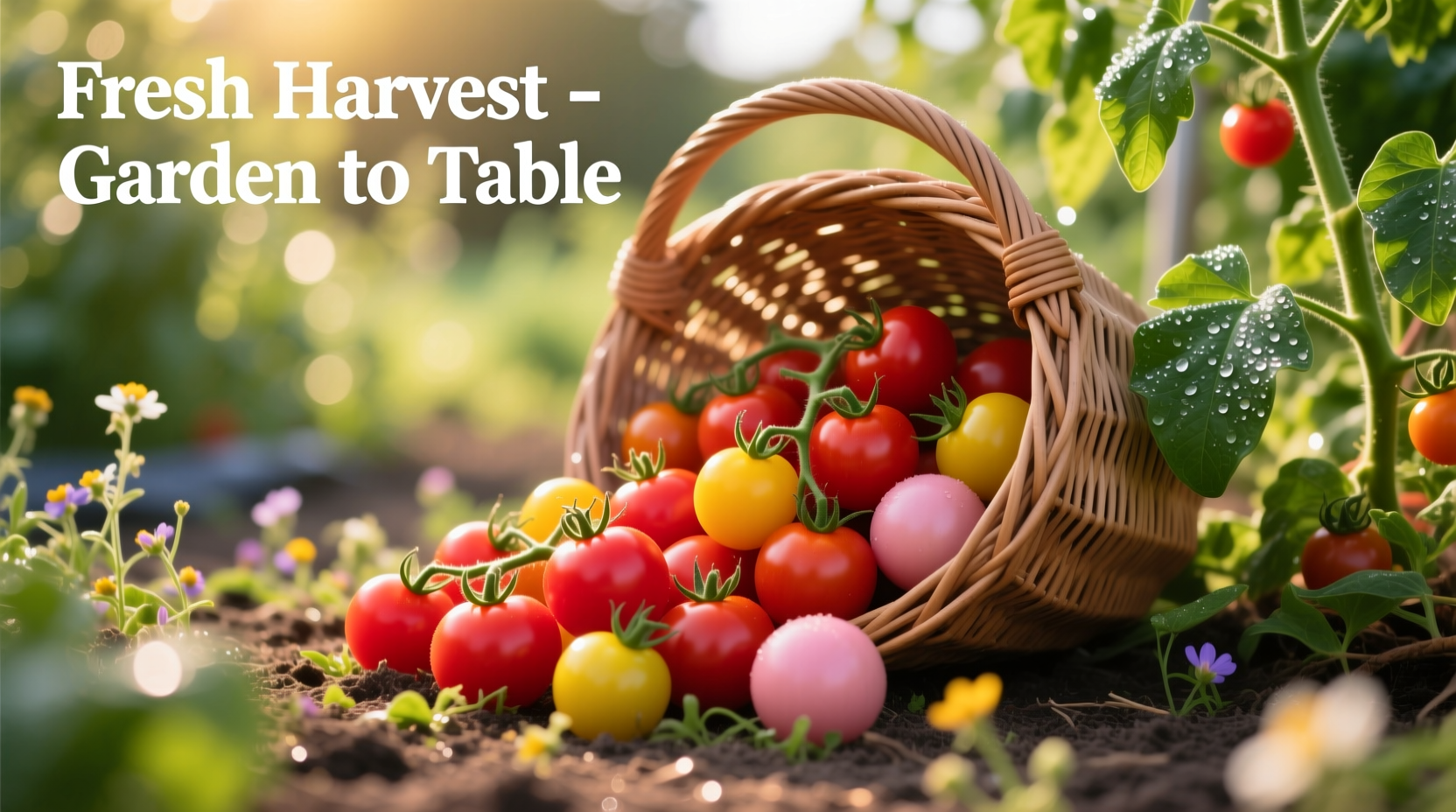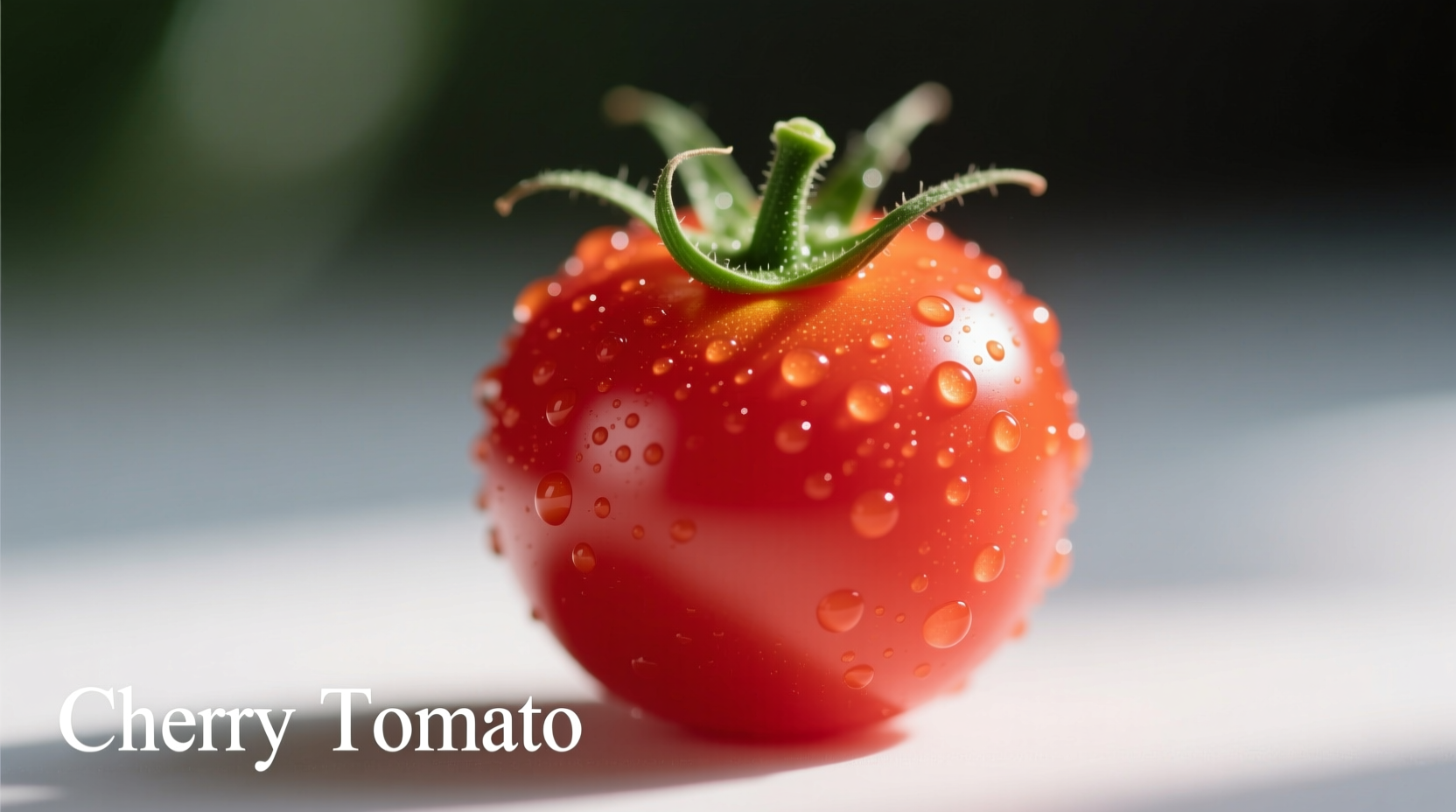When you reach for those vibrant little tomatoes at the market, you're selecting one of agriculture's most versatile fruits. Cherry tomatoes pack intense flavor in compact packages, making them perfect for salads, roasting, or snacking. Their thin skins and high sugar content (averaging 5-7 Brix) create culinary advantages regular tomatoes can't match. Let's explore why these miniature marvels deserve a permanent spot in your kitchen and garden.
What Makes Cherry Tomatoes Unique
Botanically classified as Solanum lycopersicum var. cerasiforme, cherry tomatoes represent the closest cultivated relatives to wild tomato species. Their small size isn't a modern development - archaeological evidence shows pre-Columbian civilizations in Peru and Ecuador cultivated similar varieties as early as 500 BCE. Unlike beefsteak or Roma tomatoes bred for specific culinary purposes, cherry tomatoes maintain genetic diversity with hundreds of heirloom varieties still available today.
Cherry Tomatoes vs. Common Tomato Varieties
| Characteristic | Cherry Tomatoes | Grape Tomatoes | Roma Tomatoes | Beefsteak Tomatoes |
|---|---|---|---|---|
| Size/Weight | 1-2 oz, round | 0.5-1 oz, oval | 2-4 oz, plum-shaped | 8-16 oz, irregular |
| Skin Thickness | Very thin | Thicker | Moderate | Thick |
| Sugar Content | 5-7 Brix | 6-8 Brix | 4-5 Brix | 3-5 Brix |
| Best Culinary Uses | Raw applications, roasting | Salads, skewers | Sauces, canning | Sandwiches, grilling |
Nutritional Powerhouses in Small Packages
Don't let their size fool you - cherry tomatoes deliver concentrated nutrition. A one-cup serving (149g) provides:
- 27 calories with 6 grams of carbohydrates
- 15% of daily vitamin C requirements
- 20% of vitamin K needs
- 18% of potassium daily value
- Significant lycopene content with 20% higher bioavailability than larger tomato varieties
Research from the USDA Agricultural Research Service confirms that the smaller size and thinner skins of cherry tomatoes increase lycopene absorption by 20% compared to regular tomatoes. This potent antioxidant links to reduced risk of heart disease and certain cancers. Unlike many fruits, cherry tomatoes maintain nutritional integrity whether eaten raw or cooked - their lycopene becomes more bioavailable through gentle heating.

From Garden to Table: Growing Success
Growing cherry tomatoes follows a predictable seasonal timeline that home gardeners can master with minimal equipment:
- Early Spring (6-8 weeks before last frost): Start seeds indoors at 70-80°F soil temperature
- Late Spring: Transplant outdoors after soil reaches 60°F, spacing plants 18-24 inches apart
- Mid-Summer: Begin harvesting 65-75 days after transplanting when fruits show full color
- Throughout Season: Harvest every 2-3 days to encourage continuous production
- Frost Date: Remove all fruit before first fall frost for final harvest
According to Cornell University's College of Agriculture and Life Sciences, cherry tomato plants typically produce 10-15 pounds of fruit per plant over a growing season when properly maintained. Their compact growth habit makes them ideal for container gardening - a single 5-gallon pot can yield 3-5 pounds of tomatoes. Unlike larger varieties, cherry tomatoes rarely require pruning, though removing yellowing leaves improves air circulation.
Culinary Applications That Shine
Cherry tomatoes excel in applications where their size and flavor profile create advantages:
- Raw preparations: Their thin skins eliminate the need for peeling in salads and bruschetta
- Roasting: High sugar content caramelizes beautifully at 400°F for 15-20 minutes
- Skewers: Perfect size for kebabs without cutting
- Snacking: Convenient single-bite portions rich in hydration (95% water content)
Professional chefs particularly value cherry tomatoes for their consistent size and shape, which creates visual appeal in composed dishes. When roasting, their higher skin-to-flesh ratio concentrates flavors faster than larger tomatoes. For cold applications, their natural sweetness balances acidic dressings without added sugar - a technique documented in culinary programs at the Culinary Institute of America.
Storage and Selection Guide
Maximize freshness with these evidence-based practices:
- Selection: Choose uniformly colored fruits without cracks (USDA grading standards require minimum 90% varietal color)
- Room temperature storage: Keep at 55-70°F for up to 5 days to maintain flavor compounds
- Refrigeration: Only for extended storage (beyond 5 days), which reduces flavor complexity but prevents spoilage
- Freezing: Spread on baking sheet, freeze solid, then transfer to containers - maintains texture better than whole-tomato freezing
Remember that cherry tomatoes continue ripening after harvest due to ethylene production. Store away from bananas and apples which emit high ethylene levels that accelerate over-ripening. For best flavor, consume within 3 days of purchase when stored at room temperature in a single layer.
When Cherry Tomatoes Aren't the Best Choice
While versatile, cherry tomatoes have specific limitations:
- Sauce making: Higher skin-to-pulp ratio creates texture issues in smooth sauces
- Grilling: Small size makes them prone to falling through grates
- Dehydrating: Longer processing time than larger varieties due to moisture content
- Canning whole: Require specialized equipment to maintain integrity
For these applications, Roma or plum tomatoes generally perform better. Understanding these context boundaries helps you select the right tomato for each culinary task, maximizing both flavor and efficiency in your cooking process.











 浙公网安备
33010002000092号
浙公网安备
33010002000092号 浙B2-20120091-4
浙B2-20120091-4